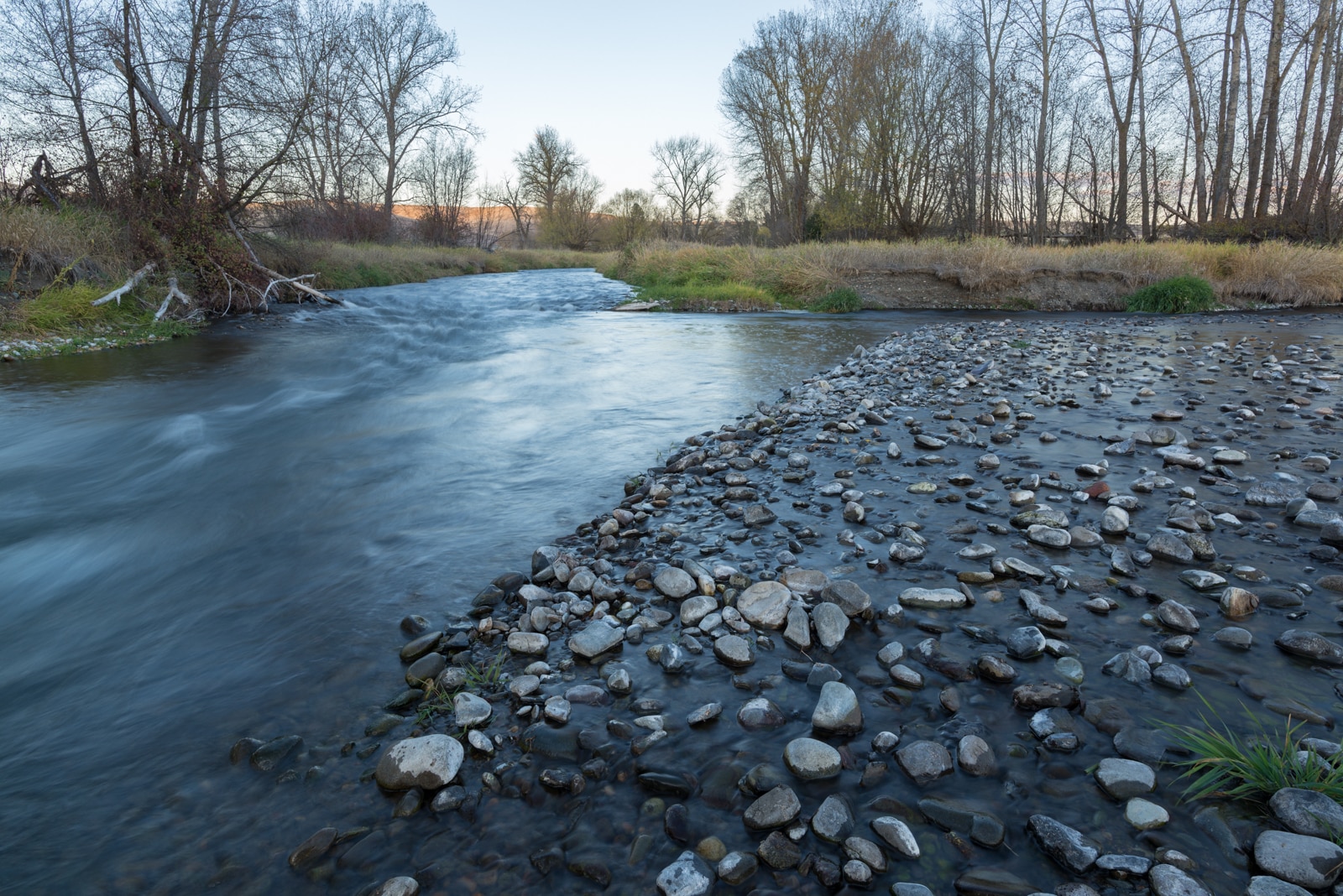Landscapes forged by legacy
“It’s how my parents did it and how their parents did it,” said Jessica Humphreys, restoration project manager in Enterprise, Oregon. “We hear that a lot.”
Landscapes are forged from legacy.
We have a deep respect for that, and understand the ways farmers and ranchers have long served as the foundation of rural economies throughout the West.
Yet we also know there are new ways of working the land that will ensure the protection of the invaluable waterways that make their livelihood possible. Today, The Freshwater Trust (TFT) partners with landowners throughout Oregon on projects that use collaborative partnerships, unique funding models, and technologies to improve the ways crops and livestock are produced, while keeping local waterways at sustainable levels for fish populations.
Late this spring, we’ll install a new irrigation efficiency project on a working ranch in Wallowa county that will conserve and protect nearly 1,000 gallons per minute between May and July.
“The Johnston Lane family have been raising cattle and growing grass and alfalfa out here for four decades,” said Humphreys. “The willingness of individuals to sit at the table with us and consider something that they never have before is what can mean the difference between water in an entire river come this summer. That’s how much it matters.”

In northeastern Oregon, a 31.4-mile tributary exits a national forest in the Wallowa Mountains and enters the Wallowa River. The Lostine River has supplied farms in the region with critical irrigation water for generations. But as the years grew drier and the number of farmland diversions increased, salmon populations plummeted. In the 1960s, Coho went extinct from this system and in the 1990s Chinook were almost extirpated.

Wallowa Whitman National Forest. Photo Credit: U.S. Forest Service
The factors contributing to this fate were intertwined, well established and would require equally multifaceted solutions, trust and avant garde thinking. TFT, the Nez Perce and Oregon Water Resources Department (OWRD) brought those.
In 2004, TFT, then Oregon Water Trust, began working with upper Lostine irrigators to come up with a solution to extreme low flow conditions caused by water being diverted for irrigation during the most critical time of the year for Chinook migration and spawning. The result of this collaboration, the Lostine Minimum Flow Agreement, was born in 2005. The program compensates more than 60 farmers and ranchers for working together to maintain a minimum flow of 15 cubic feet per second, or approximately 6,700 gallons per minute, during August and September.

Confluence of the Lostine and Wallowa Rivers in Oregon's Wallowa Valley
As irrigators became more aware of the issue and the Minumum Flow Agreement took effect, conditions in the Lostine improved significantly and the Chinook numbers rebounded.
“There are so many factors that impact Chinook populations but the increase in returns from what was recorded throughout the 90s underlined the power of these agreements,” said Humphreys. “The resource responded in huge ways.”
Even with the success of the Minimum Flow Agreement TFT recognized that the issue needed to be addressed at multiple levels and began approaching farmers & ranchers about changing the way they’d been irrigating for generations. In 2017, we secured an agreement and the subsequent funding from OWRD to convert more than 870 acres of flood irrigated land on the Wolfe Family Ranch to more precise and efficient pivot irrigation systems. This summer, this project will be responsible for conserving more than 2,800 gallons of water per minute.
Our second project is set to be installed in a matter of months and will convert 270 acres to center pivot systems on the neighboring ranch.
“What I love about this new project is that the impetus for it really came from watching TFT work on their neighbor’s property and being able to talk to the Wolfe family about their experience,” said Humphreys. “When you’re talking about making changes to livelihood, you want to make sure it’s going to be a win-win.”

Blue indicates where The Freshwater Trust has helped transition land on the Wolfe Family Ranch to pivot irrigation systems. Orange is where the new irrigation systems will be installed as part of the Johnston Lane Conservation Project. Miles of the Lostine will benefit from the upgraded irrigation.
A year after transitioning from flood irrigation to pivot systems the Wolfe’s estimated a 10 to 20% increases in agricultural production. Through monitoring of The Lostine River Conservation project TFT is able to put data to the increase in efficiency and production and use those numbers to inform future projects in the area.

Pivot irrigation system. Photo Credit: Orania Beweging
“We love being able to say that not only will you be able to ensure there’s water in the river but that you’ll be increasing your yields too,” she said. “Our projects need to make environmental and economic sense.”
Other benefits of the upgraded infrastructure include decreased use of pesticides and reduced runoff. Operation of pivots is also less time intensive than flood irrigating which allows farmers and ranchers more time to focus on other aspects of their operation.
March 29, 2019“Legacy is just a part of working the land – a beautiful part” said Humphreys. “What we’re trying to ensure is that when the next generation says, “that’s how my parents did it,” they’re talking about projects like these.”
#farmer #farming #partnership
Enjoying Streamside?
This is a space of insight and commentary on how people, business, data and technology shape and impact the world of water. Subscribe and stay up-to-date.
Subscribe- Year in Review: 2023 Highlights
By Ben Wyatt - Report: Leveraging Analytics & Funding for Restoration
By Joe Whitworth - Report: Transparency & Transformational Change
By Joe Whitworth - On-the-Ground Action – Made Possible By You
By Haley Walker - A Report Representing Momentum
By Joe Whitworth

